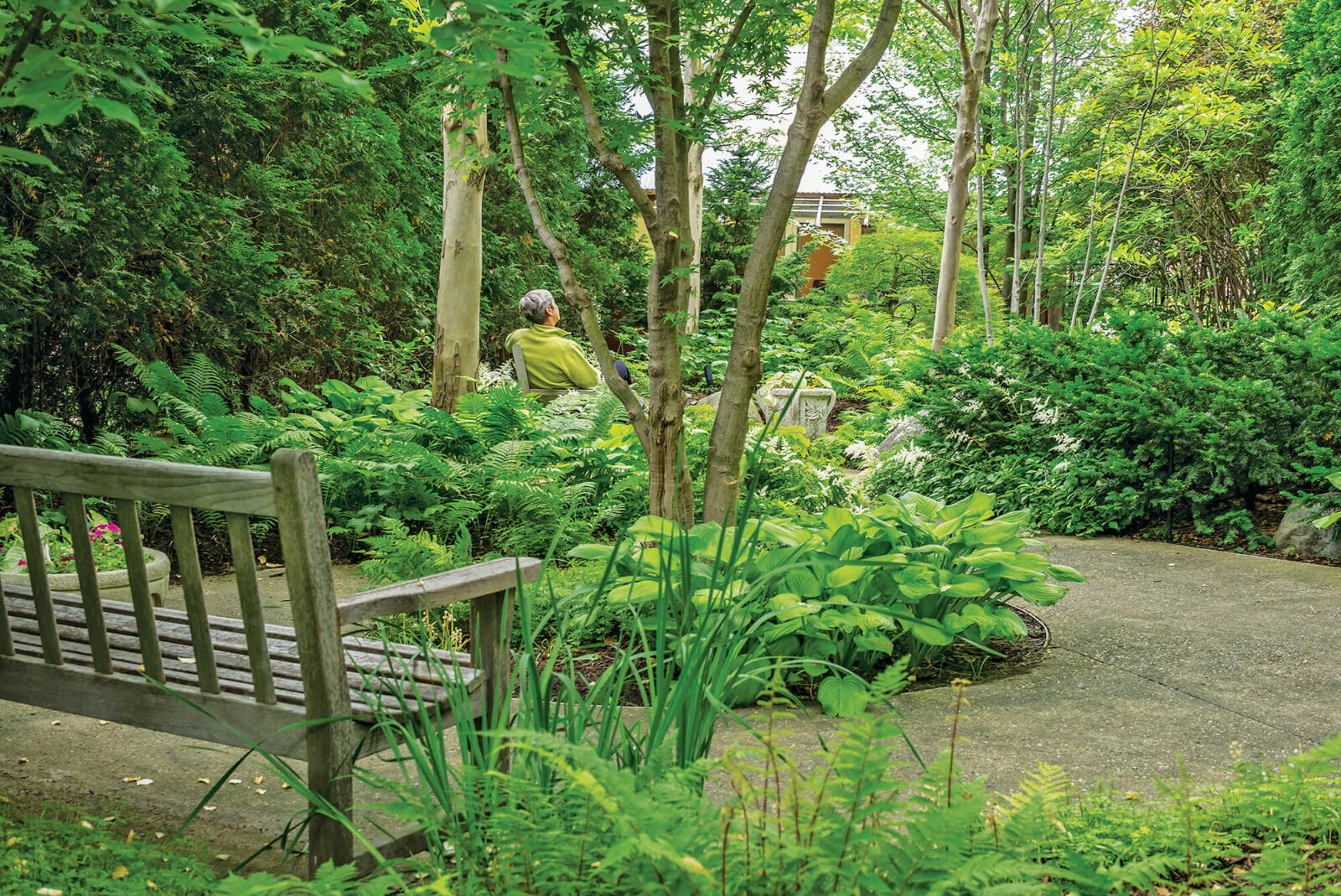
Healing gardens
The power of nature
Virginia Burt believes passionately in the therapeutic power of nature, and the transformative potential of healing gardens.
“Any garden can be considered a healing garden,” says Burt, owner of Burlington, Ont.-based Virginia Burt Designs. “Regardless of how extensive, gardens have the potential to decrease blood pressure, reduce stress and bring about a feeling of relaxation.”
Many of Burt’s gardens are created for health care institutions. However, she says 60 per cent of her work is for residential properties. In her 30 years as a landscape architect, she has created more than 300 inspiring gardens, from balcony boxes to 500-acre properties. The two gardens profiled here are among those Burt will share in a presentation at Congress ’17.
The Gathering Place, Kitchener, Ont.
Norma’s Garden was created for The Gathering Place, an organization that addresses the emotional, physical, spiritual and social needs of those touched by cancer. The garden is a series of 11 interconnected rooms highlighting sculptures and water features, and providing areas for quiet meditation. Using input from staff, cancer survivors, family members and donors, Norma’s garden was designed with two main themes: play and meditation. Participants are as diverse as the garden spaces themselves — at times children run squealing with delight and at others quiet reflective spaces are needed.
Eileen Saffran, executive director of The Gathering Place, said, “Virginia captured the spirit of our organization and wove it into the fabric of the garden. Every functional area has the appearance of a unique piece of art. When you gaze upon Virginia’s creation, you are overwhelmed by the tremendous thought, foresight, and inspiration that went into the placement of every tree, bench and sculpture. As an organization, we are truly thankful that Virginia, and her wonderful spirit, will forever be a part of our work.”
University Hospital Schneider Healing Garden, Cleveland, Ohio
Virginia Burt Designs was commissioned by University Hospital to create a respite for cancer patients, survivors, staff and family members, adjacent to the Seidman Cancer Center (SCC). After input sessions with patients, their loved ones and staff, Burt turned to the 1924 A.A. Milne poem, Halfway Down, for inspiration. “Somewhere else instead” is an apt metaphor for the suspension of daily life that those facing cancer. A garden wall separates the garden from busy streets, while windows in the adjacent hospital allow patients to look into the garden from several levels. Passing through the gate and into “somewhere else instead,” street noise recedes, replaced by rustling leaves. Spiraling outward from the center is an accessible granite labyrinth.
Moveable furniture encourages gatherings or finding a shady place to reflect. A snow-melt system using reclaimed steam, combined with illuminated LED walls, ensure that the garden remains vibrant during Cleveland’s long winter months.
In creating the Schneider Healing Garden, Burt balanced the patient’s need to recharge with the complex administrative requirements of a large medical institution. Remaining true to the project’s mission — to create delight for the eye and solace for the soul — Burt facilitated patient/client input, designed the master plan, selected appropriate materials to achieve LEED accreditation, collaborated with artists, coordinated with multiple consultants and oversaw all construction.
One cancer survivor wrote, “As I walked the labyrinth, I became intensely aware of how this garden brings a new level of healing to my heart. I can only imagine what it will mean to people who are coming here during their long course of treatment. It is an ongoing gift to those who come back many years after treatment and find comfort for past fear and sorrow in this beautiful space.”